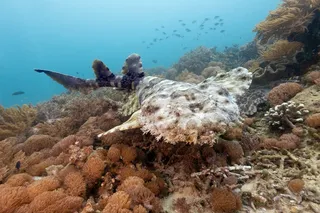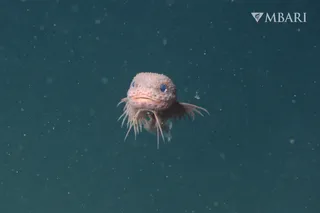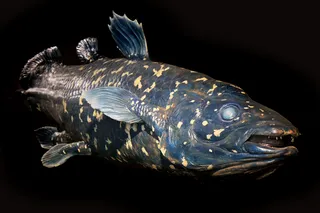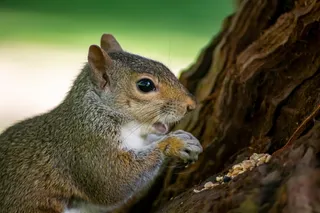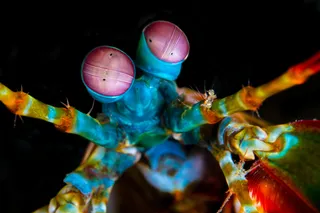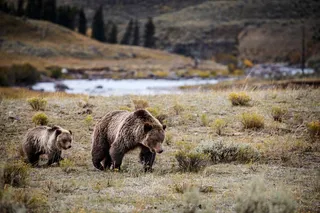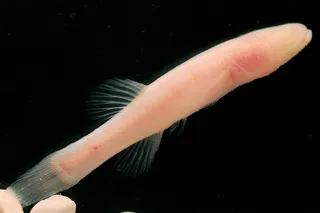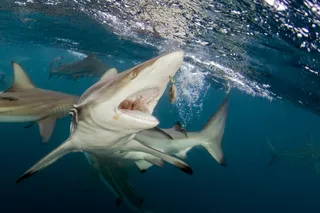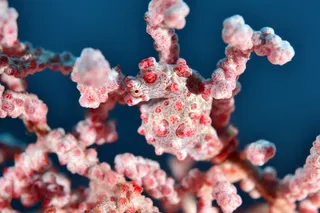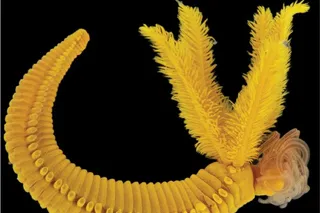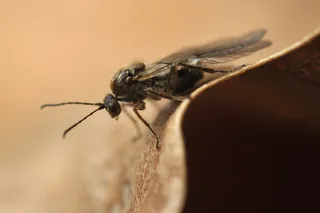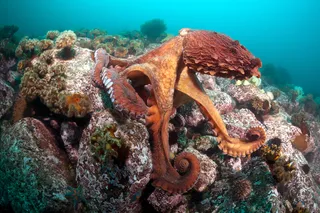: The oldest recovered dinosaurs, including two-legged predators like Herrerasaurus, tromped around Argentina and Brazil some 230 million years ago. But exactly what happened after those beasts is a mystery: paleontologists have puzzled over an evolutionary gap in the fossil record between these early creatures and the more complex theropods, a suborder of bipedal dinosaurs---including Tyrannosaurus rex---that eventually comprised all dino carnivores. In the rocks of New Mexico’s Ghost Ranch, paleontologists have discovered the skull and vertebrae of a new dinosaur species that may fill this evolutionary gap. Dubbed Daemonosaurus chauliodus, this up-to-five-feet long, 205-million-year old predator has characteristics of both the first dinosaurs and the more advanced predators. As Hans-Dieter Sues, a paleontologist at the National Museum of Natural History in Washington, D.C., told National Geographic, the skull is unusual because "it has a ... short snout and these monstrous front teeth. That's a kind of skull structure for a predatory dinosaur that's really unexpected for this early point in time." What's the Context:
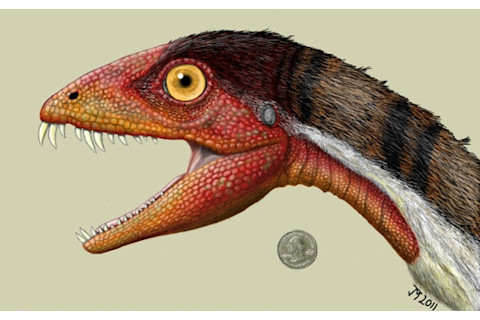
What's the News
The reason this dinosaur is considered a bridge is because it exhibits morphological characteristics of both the early and late theropods. Among other similarities, it's linked to the earliest dinosaurs because it exhibits “more primitive bones related to the air sacs of a bird-like lung system.” However, its buck teeth are more akin to the teeth of later carnivorous dinosaurs.
Daemonosaurus chauliodus means "evil spirit buck-toothed reptile." The "evil spirit" alludes to the site where it was found.
Daemonosaurus chauliodus has a short snout, but as carnivorous dinosaurs evolved, their snouts grew longer, accommodating more teeth. Also, theropod limbs became more bird-like in time; and in fact, birds are thought to have evolved from theropods by about 150 million years ago.
New Mexico's Ghost Ranch has coughed up dino bones several times before. More recently, in 2007, paleontologists discovered
Dromomeron romeri
in the Hayden Quarry.
And paleontologist Nick Longrich has discovered more than his fair share of new dinosaur species.
Reference: Hans-Dieter Sues, Sterling J. Nesbitt, David S Berman, and Amy C. Henrici. "A late-surviving basal theropod dinosaur from the latest Triassic of North America." Proceedings of the Royal Society B. doi: 10.1098/rspb.2011.0410
Image: Smithsonian / Jeffrey Martz


